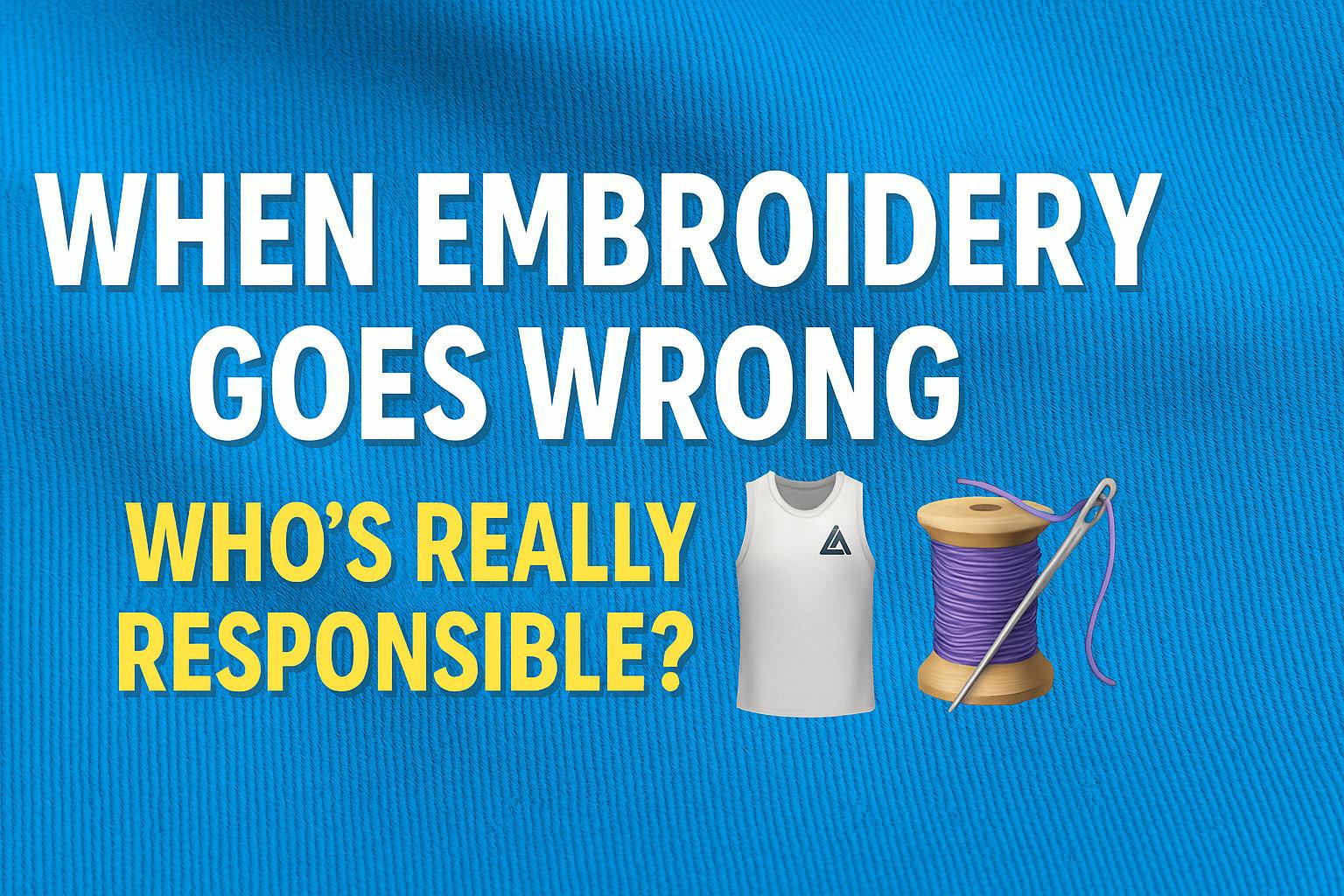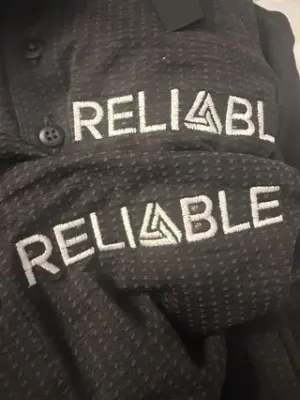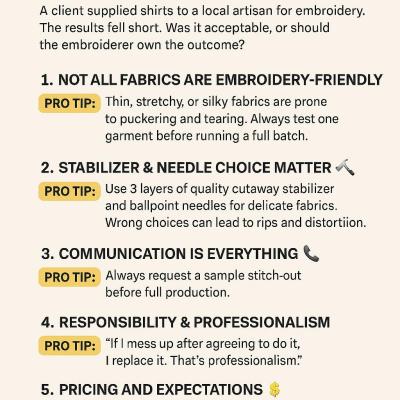
When Embroidery Goes Wrong: Who’s Really Responsible? 🎽🧵
Is This Acceptable? Lessons from an Embroidery 👕🧵
When you invest in branded apparel, you expect your logo to look sharp, professional, and durable. But what happens when the results fall short? A recent discussion among embroiderers highlighted an important question: Who is responsible when embroidery on supplied garments goes wrong—the client or the embroiderer?
The Situation 🤔
A customer brought their own shirts to a local artisan to have the company logo embroidered. The results were disappointing:
Crooked placement on white polos
Puckering around letters
Even visible tears inside the letter B on black shirts
The embroiderer blamed the customer for not confirming whether the fabric was suitable for embroidery. The customer, however, had paid a premium price ($50 per shirt, including digitizing and rush fees) and expected professional guidance.
So—was this acceptable?
Key Takeaways from the Discussion 💡
1. Not All Fabrics Are Embroidery-Friendly
📝 Pro Tip: Thin, stretchy, or silky fabrics (like polyester blends) are prone to puckering and tearing. Always test one garment before running a full batch.
Some embroiderers pointed out that the material was “slinky” and tricky, requiring the right stabilizer and needle choice. A skilled shop should recognize potential risks before starting production.
2. The Importance of Stabilizer & Needle Choice
🔧 Pro Tip: Use 3 layers of quality cutaway stabilizer and ballpoint needles for delicate fabrics. Wrong choices can lead to rips and distortion.
Several experts noted that the wrong stabilizer was likely used, and white backing on black fabric was another rookie mistake.
3. Communication Is Everything
📞 Pro Tip: Always request a sample stitch-out before full production.
The embroiderer promised to send a proof but skipped straight to finishing the order. Professionals agreed: one test run should have been done before embroidering all the shirts.
4. Responsibility & Professionalism
Some embroiderers said they’d never replace customer-supplied garments due to risk. Others stressed that if you accept the job, you own the results.
One comment stood out:
“If I mess up after agreeing to do it, I replace it. That’s professionalism.”
5. Pricing and Expectations
💲 Pro Tip: High prices mean higher expectations.
At $50 per shirt, customers reasonably expected a premium experience. If the outcome looked worse than large-scale competitors, the “local touch” lost its value.
Final Thoughts 🎯
So, was it acceptable? No. While tricky fabrics are always a gamble, a professional embroiderer should:
✔ Assess fabric risk before starting
✔ Offer a test stitch and consult with the client
✔ Use proper stabilizers and needles
✔ Stop production if problems arise
✔ Take responsibility when things go wrong
For customers: ask for test samples, know your fabric, and work with shops that handle the entire process—from garment sourcing to final embroidery. This way, responsibility is clear, and results are more consistent.
✨ Moral of the story: Embroidery is as much about communication and preparation as it is about stitching. Don’t just trust the process—test it first!






Recommended Comments